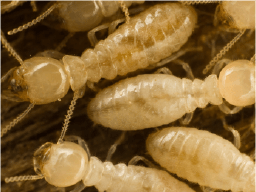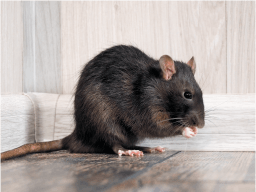Mice: What You Need to Know
Need to get rid of mice? Read on to learn the answers to all of your important questions. Need help? Call our professionals today to get started.
Schedule Today!
What Are the Common Types of Mice in the United States?
Mice may seem cute, and in fact, some people keep mice as pets, but the mice that come into your home can do a lot of costly damage. Mice are small rodents that have a pointed snout, rounded ears, and a long, scaly tail. The common house mouse is the most well-known species of mice. Other kinds of mice that may invade your home looking for food and shelter include various forms of field mice such as deer mice and white-footed mice. Fancy mice are a form of the house mouse that has been domesticated and is usually kept as a pocket pet.
What Does a House Mouse Look Like?
The common house mouse can be gray or brown, has a characteristically pointed snout, rounded ears that are large for their head and a long tail. They are about 3 to 4 inches in length and their long tails can be 2 to 4 inches long.
Deer mice have 56 subspecies and live in the Americas. They are about 3 to 4 inches long, not including the tail. Their fur can vary from white to black, but they are always distinguishable by their white underside and white feet. These distinctive markings can also be found in the white-footed mouse and it is very difficult to tell the difference between the two.
Mice Behavior?
The mouse is a nocturnal animal and don’t like bright lights. House mice typically feed on plant matter, but are omnivorous if necessary. They don’t have fixed social patterns, instead adapting to behavior that fits their environmental context. When mice live near humans and have an excessive food source which results in high population densities, their behavior changes from primarily territorial to one that is stratified according to a hierarchy of individuals.
How Do Mice Enter My Home?
Mice enter homes through any holes or gaps that allow them entry into your home including gaps in doors and cracks in walls as well as through sewer lines and drainage pipes. To keep mice from entering your home, be sure to seal all cracks and holes and seal off drainage pipes to prevent mice from entering your home through sink or bathtub drains.
Can A Mouse Infestation Damage My Home?
The common house mouse, while not dangerous in the sense that they will attack or bite you, is still dangerous in that they spread diseases like hantavirus, salmonella and listeria through their droppings, urine, saliva and nesting matter. Additionally, mice multiply quickly and can breed year-round. One female mouse can produce 5 to 10 litters a year with an average of 6 to 8 babies per litter. Over the course of three months, one small mouse family can multiply up to 10 times its original size.
Perhaps most importantly, mice pose a serious fire hazard inside your home. Mice love to chew on wires and once a wire becomes exposed, the chance of it sparking a fire goes up. To greatly reduce all the risks that may come with a mouse infestation, call a pest control specialist at the first sign of a mouse in your house.
How Can I Get Rid of Mice in My Home?
The best way to get rid of any mouse problem in your home is to call a pest professional right away. Trained pest control experts use professional extermination methods coupled with extensive knowledge and training to make sure that your infestation is completely taken care of.
Call Pest Control Experts today to get a free quote and to schedule your home pest inspection as soon as possible!
Call 855-891-5410















